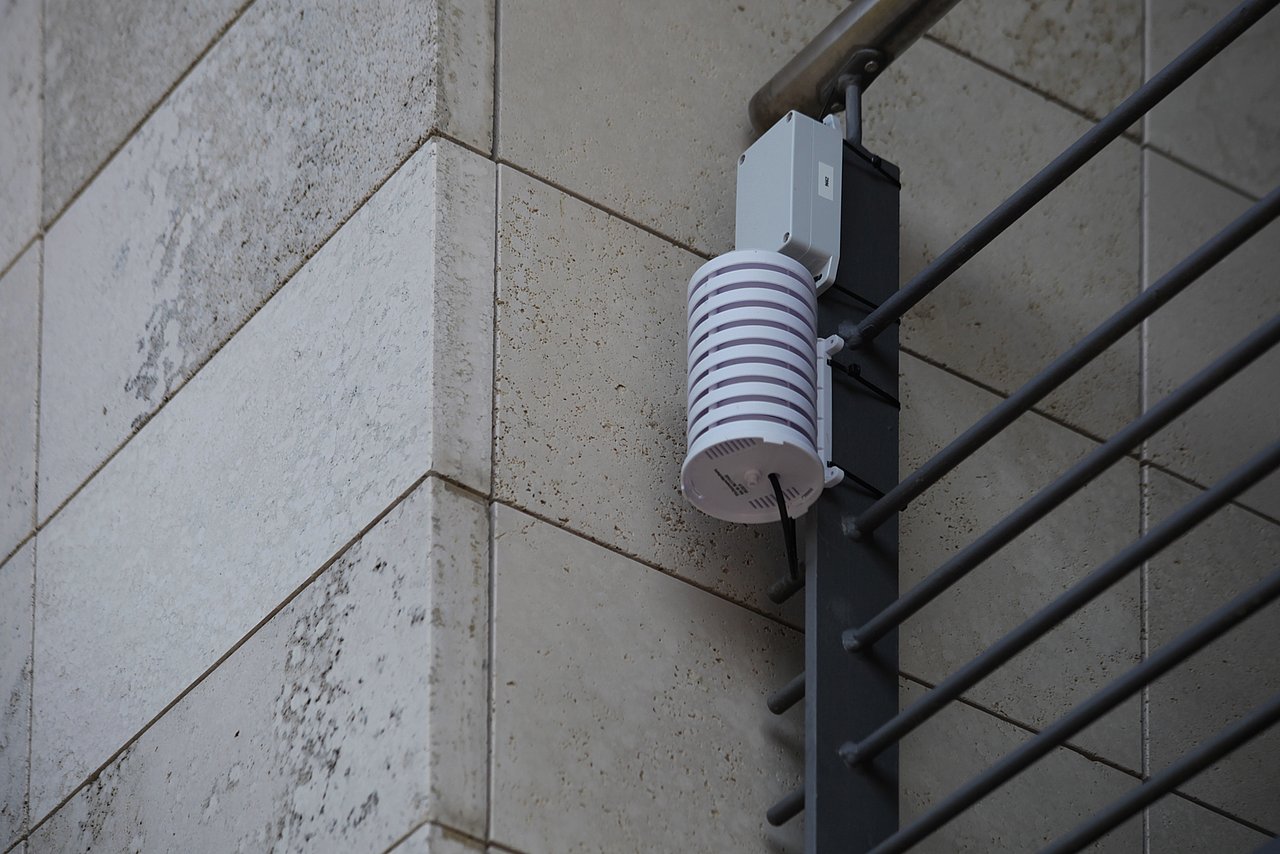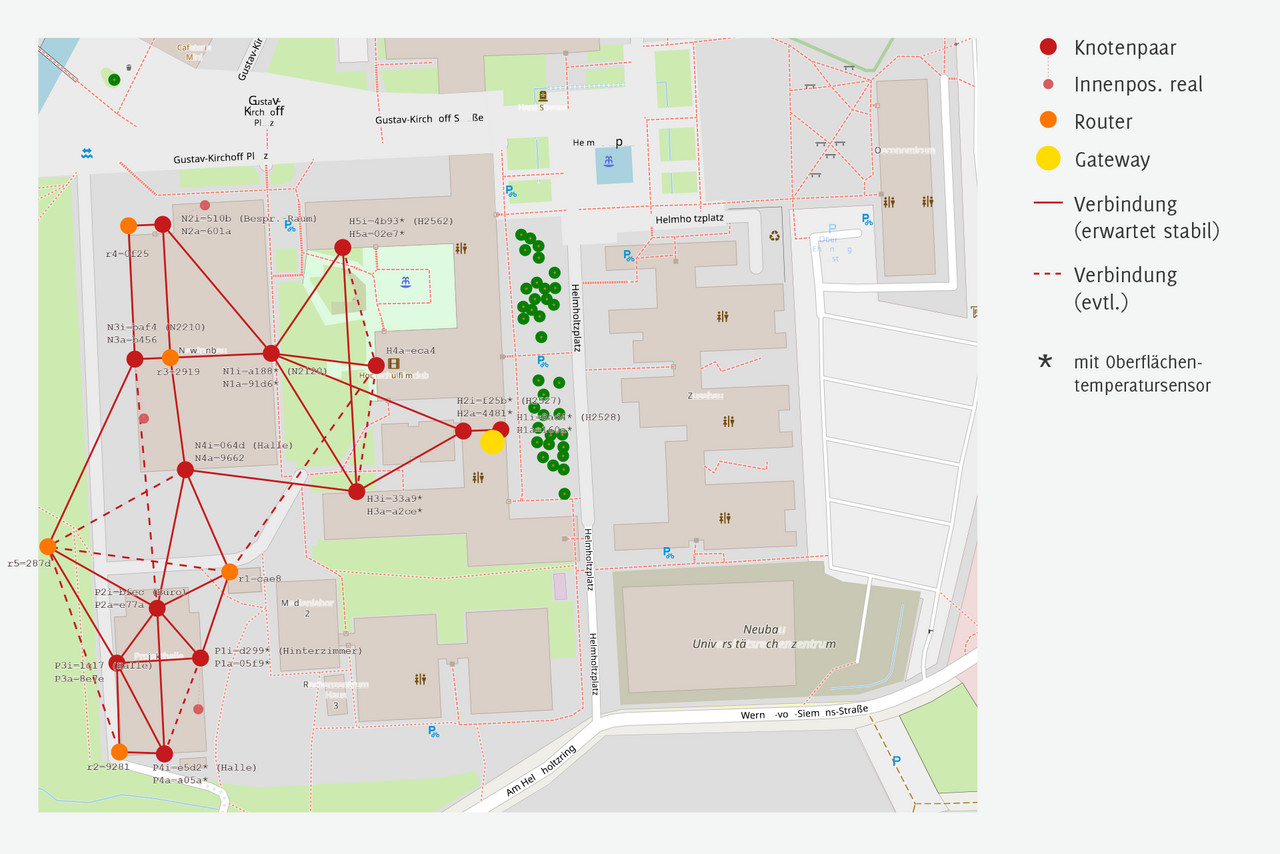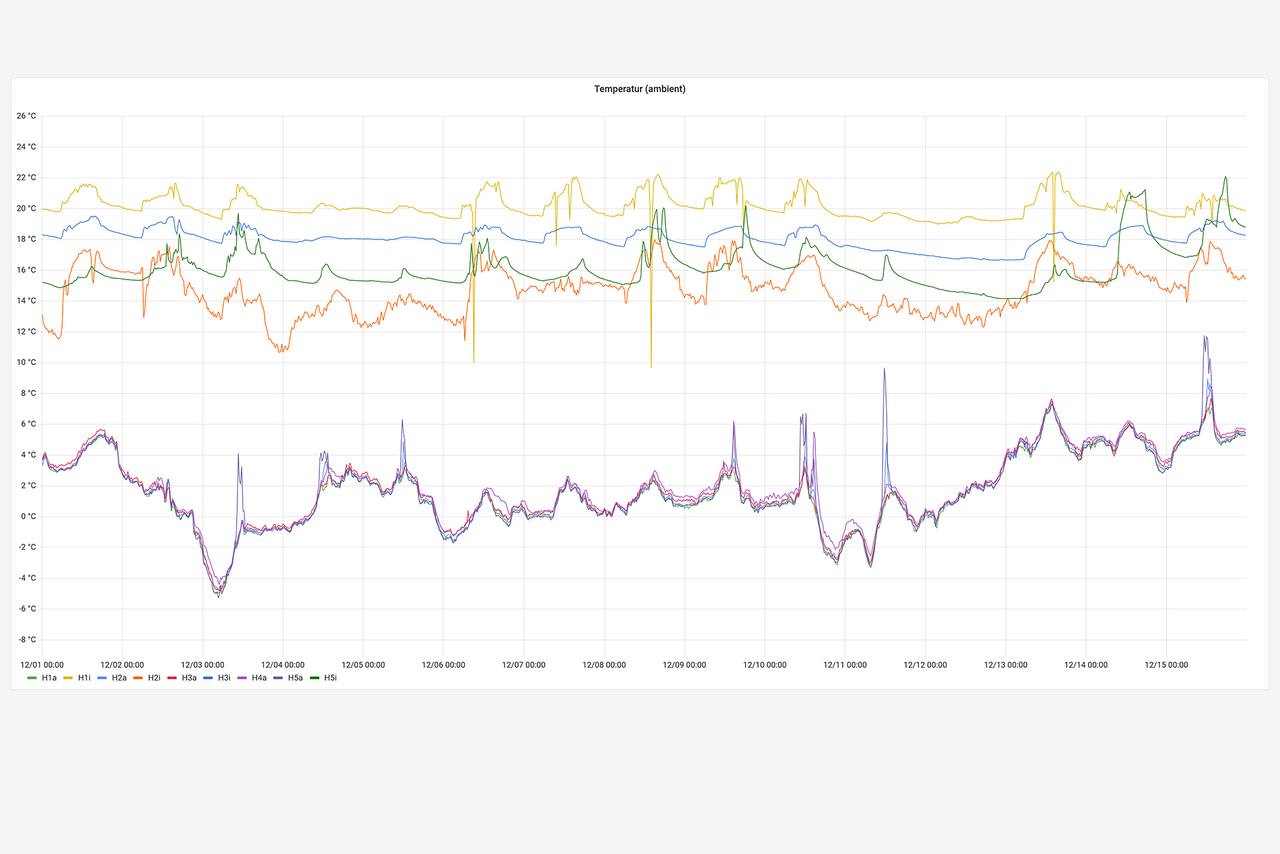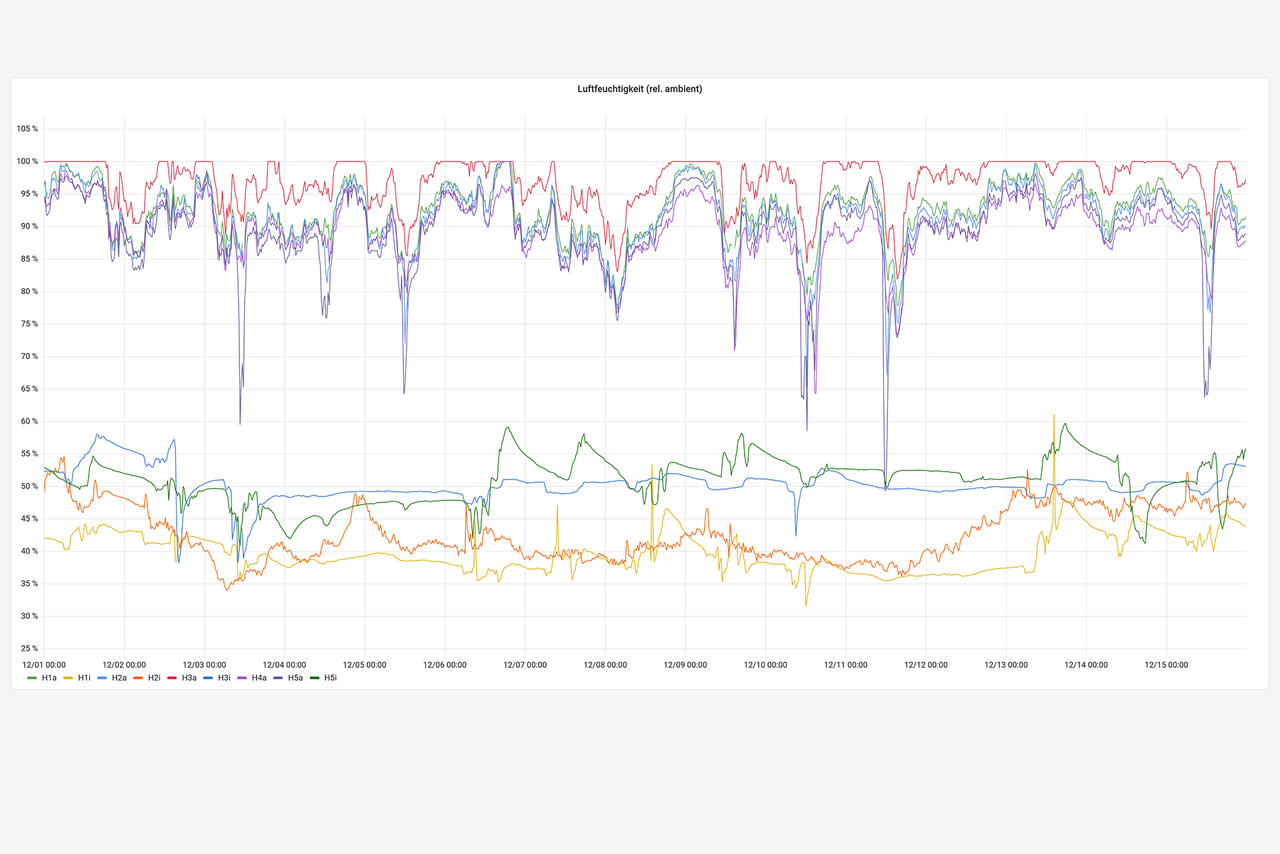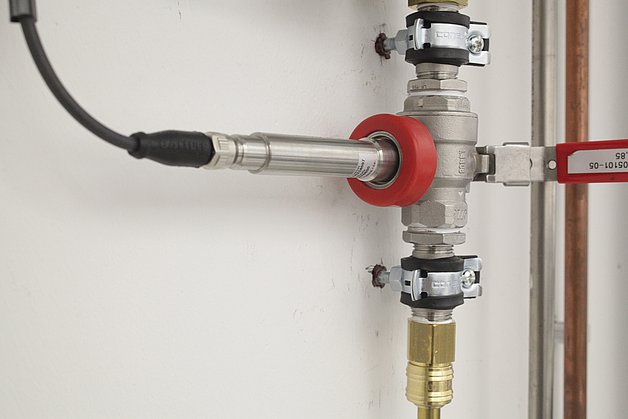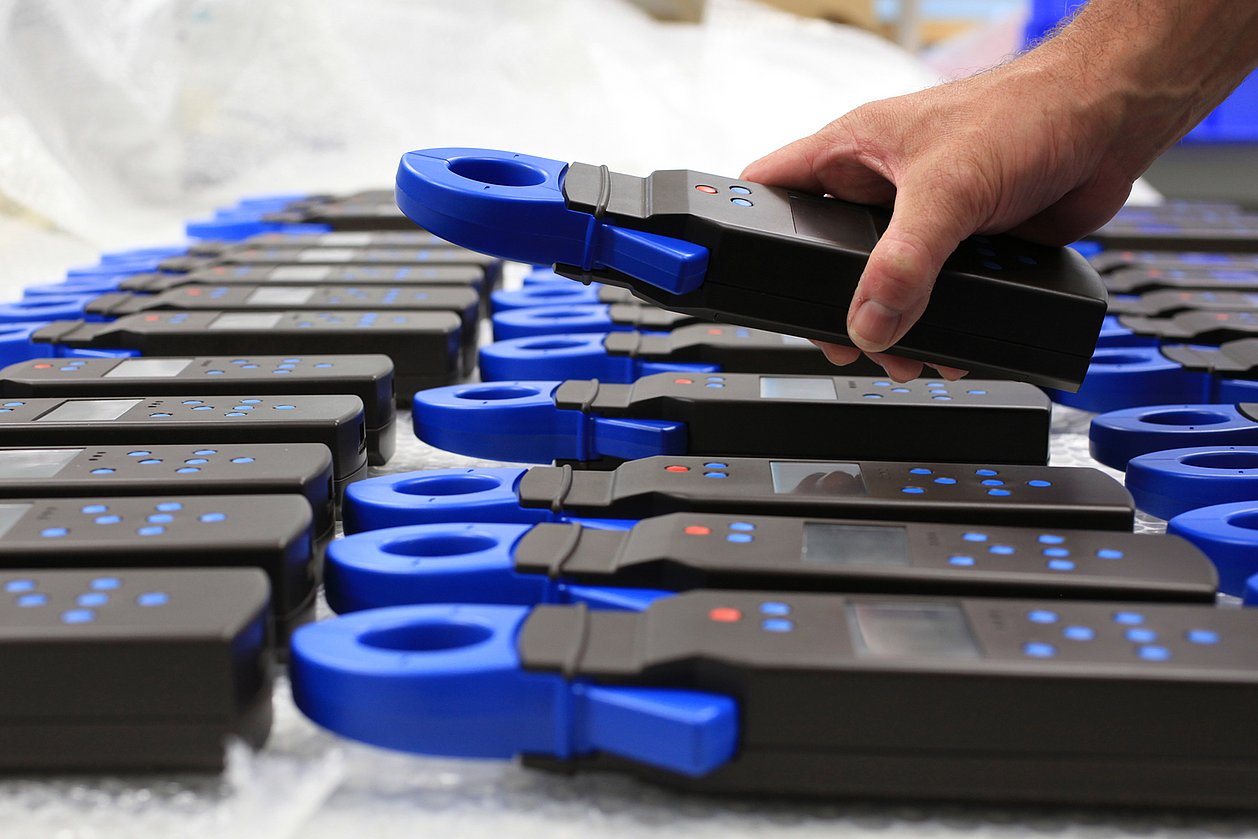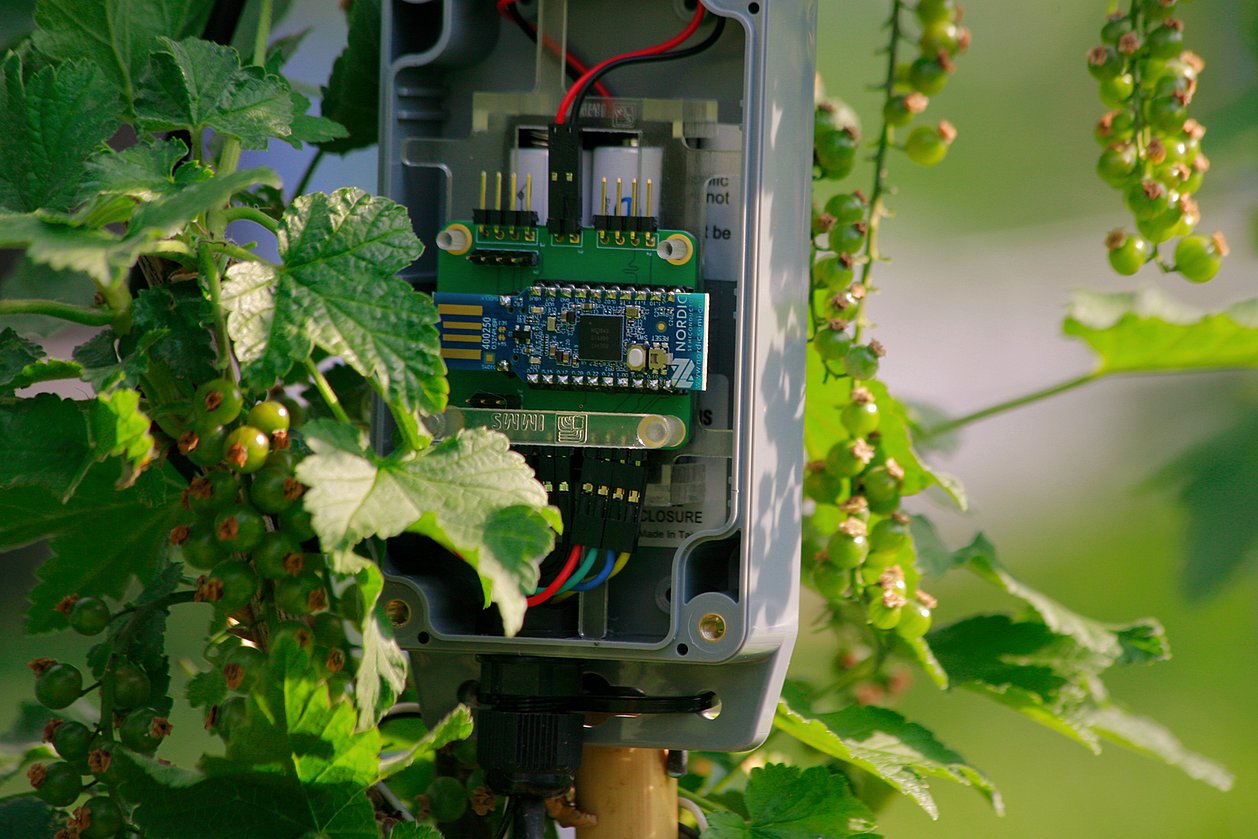Project InSignA: Pilot project 1
IMMS collects microclimatic data across a building complex on the campus of Technische Universität Ilmenau for energy consumption optimisations.
Pilot project real-time capable energy simulation platform
The objective was the design, conception and implementation of a cross-institutional, real-time-capable simulation platform for cross-sectoral energy systems. These link the areas of electricity, heat, gas, transport, and industry via so-called sector coupling.
A building complex on the campus of Technische Universität Ilmenau served as a model for this. Both energy meter data and microclimatic sensor data were to be collected for this complex. The combination of both makes it possible to associate energy consumption with weather-related data, to identify correlations, and to derive energy-saving measures from them.
Our contribution: Wireless microclimate measurements
In the pilot project, IMMS together with the Department of Theoretical Electrical Engineering (TET) and the Energy Usage Optimization Group of Ilmenau TU deployed microclimate sensors, collected measurement data, and evaluated them. For the “microclimate”, temperature and humidity are recorded at various measuring points within the building complex.
For this purpose, we adapted an existing technology for wireless sensor nodes (MiraOS) to the needs of the project, assembled appropriate hardware, and configured software to collect microclimate data inside and outside the buildings Helmholtzbau, Newtonbau, and Projekthalle on the campus of Ilmenau TU.
The battery-powered and thus self-sufficient wireless sensor nodes organise their communications autonomously and send their measurement data – depending on the local wireless conditions, across several of the nodes – to a central gateway. This gateway collects the measurement data and stores it in a database at IMMS. From there, the data can be visualised or exported for analysis. Ultimately, they flow into the simulation platform of the pilot project.
Air temperature and humidity inside and outside (in the same area of the building envelope) are measured on the four sides of the buildings roughly corresponding to the points of the compass, and surface temperatures of the facade or wall surfaces inside are also measured at some of the measuring points.
Results of the pilot project flow into the InSignA high-performance centre
At the end of the project period, microclimatic measurement data for the model building complex were available for a period of approximately six months. To extend the data base to a full year, the sensor network will continue to operate beyond the end of the project.
Analyses by the TET department have already demonstrated correlations with energy consumption as well as weather data. To derive concrete measures for energy savings, finely resolved measurement data on energy consumption in the buildings is still required. For this purpose, the Department of Buildings and Technology (DGT) of Ilmenau TU is carrying out expansion and development measures.
The partners aim to continue this preliminary work in further projects within the high-performance centre and, in addition to generating proposals for energy-saving measures, also to assess their effect by means of sensors.
InSignA high-performance centre
The goal of the “InSignA” high-performance centre in Ilmenau is to enable accelerated technology transfer. With this, regional value-added networks in the future-oriented transfer areas of signal analysis and assistance systems in production, energy supply, and robotics are to be developed and established.
This is intended to strengthen and further develop the local and regional economy and make it more resilient. For this purpose, the core competencies of the Fraunhofer institutes in and around Ilmenau, the research profile of Ilmenau TU and the competencies of other research institutions are bundled. As an affiliated institute and transfer partner of Ilmenau TU, IMMS contributes to InSignA on behalf of the latter.
Acronym / Name:
InSignA: Pilot project 1 / Leistungszentrum „Intelligente Signalanalyse- und Assistenzsysteme — InSignA“: eines von fünf flankierenden Pilotprojekten durch Fachgebiete der Technischen Universität Ilmenau Pilotprojekt 1: „Entwurf und Umsetzung einer einrichtungsübergreifenden, echtzeitfähigen Simulationsplattform für cross-sektorale Energiesysteme“ (Koordinator: Univ.-Prof. Dr.-Ing. Peter Bretschneider, Fachgebiet Energieeinsatzoptimierung, TU Ilmenau)Duration:2021 – 2022
Project website:Leistungszentrum InSignA
Application:
|Energie-Management| Gebäude-Management| Energieverbrauchsoptimierung| Mikroklima-MonitoringResearch field:Smart distributed measurement and test systems
Related content
Intelligente Signalanalyse- und Assistenzsysteme mit KI in der Produktion
Peter Hauschild1. Tino Hutschenreuther2.Workshop zum Themenschwerpunkt „KI-Geschäftsmodelle“ mit dem Thema „KI verändert Produktionsprozesse“, 26. März 2024, ZAKI, Zentrum für Angewandte künstliche Intelligenz, Jena
1Fraunhofer Institut für Digitale Medientechnologie IDMT, Leistungszentrum InSignA. 2IMMS Institut für Mikroelektronik- und Mechatronik-Systeme gemeinnützige GmbH, Ehrenbergstraße 27, 98693 Ilmenau, Germany.
Contact
Contact
Dr.-Ing. Tino Hutschenreuther
Head of System Design
tino.hutschenreuther(at)imms.de+49 (0) 3677 874 93 40
Dr. Tino Hutschenreuther will answer your questions on our research in Smart distributed measurement and test systems and the related core topics Analysis of distributed IoT systems, Embedded AI and Real-time data processing and communications, on the lead applications Adaptive edge AI systems for industrial application and IoT systems for cooperative environmental monitoring as well as on the range of services for the development of embedded systems.
Funding
IMMS contributes to InSignA as an affiliated institute and transfer partner of Ilmenau TU on their behalf. The pilot project and the InSignA performance center are funded by the Federal Ministry of Education and Research and the Thuringian Ministry of Economic Affairs, Science and Digital Society.


